March 2010 Newsletter
Welcome to the March 2010 issue of the Global Washington newsletter. If you would like to contact us directly, please email us.
IN THIS ISSUE
- Note from our Executive Director
- Featured Organizations :RenegAID – Fostering innovative disaster relief efforts
- Changemaker: Sean Dimond of Agros International
- Global Entertainment: Blessed Unrest: How the Largest Social Movement in History is Restoring Grace, Justice, and Beauty to the World by Paul Hawken
- Announcements: RESULTS Educational Fund Benefit, Unitus Names New VP of Global Communications, 5-Part Capacity Building Workshop for Executive Directors
- Upcoming Events
Note from our Executive Director
Happy Norooz and happy spring from Global Washington! I hope the extra hour of sunshine at the end of the day is working its revitalizing magic on your spirits.
I am thrilled that so many of you responded to our survey. We gathered a lot of insightful information on how Global Washington can delve deeper into our membership services and programming in order to expand upon and enrich what we offer to the global development community in Washington State. Thank you for contributing your valuable time and your feedback. We are currently in the process of analyzing the data and we will report the results next month in our April newsletter.
March has been an exciting time for Global Washington! We have convened experts to host informative capacity building workshops focused on fundraising, strengthening leadership skills, developing effective communication strategies, and responding to disasters. In the upcoming months, we are bringing together a variety of phenomenal guests from far and wide to engage with our community and contribute to the ongoing dialogue surrounding key global development issues, including an intimate forum with voices from developing world about the effectiveness of foreign aid. We hope you, as a vital participant in Washington State’s global development community, can join us in these opportunities to both learn from experts and share your knowledge with others.
In unity,
Bookda Gheisar, Executive Director
Featured Organization: RenegAID™ – Fostering innovative disaster relief efforts
 When Eunice Stime, a registered nurse, arrived in Mississippi and Louisiana’s Mississippi Delta to assist disaster victims in the wake of Hurricane Katrina, she quickly discovered what it means to confront utter chaos. Expecting to utilize her medical training and expertise, Eunice instead realized that having a vehicle was the most useful asset she could contribute to provide immediate assistance.
When Eunice Stime, a registered nurse, arrived in Mississippi and Louisiana’s Mississippi Delta to assist disaster victims in the wake of Hurricane Katrina, she quickly discovered what it means to confront utter chaos. Expecting to utilize her medical training and expertise, Eunice instead realized that having a vehicle was the most useful asset she could contribute to provide immediate assistance.
“Even though I’m an RN, I needed to go up and down streets and connect survivors and humanitarian staff to relief distribution locations. I had to forget what my college skill was and do what needed to be done,” she said. “Another way to look at it would be to see the entire disaster as an open air hospital and I was doing my nursing rounds.”
Eunice’s observations and experiences in the aftermath of Katrina inspired her to found RenegAID, a nonprofit dedicated to “innovative disaster relief”. Many disaster response efforts, as seen in post-Katrina Gulf Coast/Mississippi Delta, Indonesia, and 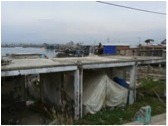 most recently, Haiti, are crippled by the amount of lag time between when supplies arrive, and when they get to survivors. Relief efforts, even when guided by the most sincere intent to help those in need, suffer from chronic logistical problems and muddled distribution strategies that continue to be replicated in disaster areas all over the world.
most recently, Haiti, are crippled by the amount of lag time between when supplies arrive, and when they get to survivors. Relief efforts, even when guided by the most sincere intent to help those in need, suffer from chronic logistical problems and muddled distribution strategies that continue to be replicated in disaster areas all over the world.
To say that collapsed infrastructure, lack of organization and collaboration among governments and response teams, and the ensuing chaos after a disaster are all significant obstacles that contribute to the prolonged delay of distributing food, water, and critical medical supplies to survivors is like a professional bridge builder saying that there was difficulty getting a bridge built because there was a river in the way. Inherent in catastrophic disaster is total chaos and disorder. They can not be used as excuses for our lack of timeliness.
Eunice compares the philosophy behind RenegAID’s mission and operational framework to a Phoenix effect, where loss and regeneration borne out of disaster are like a birth—where survivors simultaneously experience a total loss of identity and a total dependence on a new world reality. Part of RenegAID’s mission is to help equalize the power dynamic between the givers and the receivers of aid in order to reject the idea of aid as charity or welfare and create sustainable solutions.
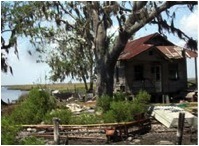 “We, as humanitarians, have some words turned around or backwards when we discuss Disasters. The host is not the nation that has experienced a catastrophic disaster. They are the stranger in their own land. A host takes care of and feeds the stranger. We (humanitarians) have been using the word host to refer to a country that is in need of hospitality/hospital care. If the damaged/injured country is truly the host and if the humanitarian world is indeed the stranger, then the damaged/injured country by hospitality traditions should be meeting the needs of the humanitarians. That makes absolutely no sense. If we are ever going to get our humanitarian response right, we need to see ourselves as the host (or hospital).”
“We, as humanitarians, have some words turned around or backwards when we discuss Disasters. The host is not the nation that has experienced a catastrophic disaster. They are the stranger in their own land. A host takes care of and feeds the stranger. We (humanitarians) have been using the word host to refer to a country that is in need of hospitality/hospital care. If the damaged/injured country is truly the host and if the humanitarian world is indeed the stranger, then the damaged/injured country by hospitality traditions should be meeting the needs of the humanitarians. That makes absolutely no sense. If we are ever going to get our humanitarian response right, we need to see ourselves as the host (or hospital).”
RenegAID’s purpose is driven by the humanitarian and pragmatic desire to close the lag time between supply delivery and distribution to survivors and to urge the international community to rethink the current system of disaster response. “We need to get supplies out to individual survivors in the first couple of days. Otherwise there is a tremendous amount of justified anger,” Eunice explains. “We haven’t learned how to do distribution well. We are missing the piece of how to transport supplies to the survivors.”
Part of RenegAID’s strategy for streamlining supply distribution post-disaster is the organization’s Ready-to-Go Disaster Relief Bicycle Project. Modeled after Dave Schweidenback’s widely successful “Pedals for Progress”, a project that facilitates the shipment of donated bicycles to locations in developing countries worldwide, RenegAID received permission to adopt Schweidenback’s model and refocus the project for disaster areas.
The intent of the Ready-to-Go Bikes Project is to facilitate small shipments of bicycles through existing humanitarian disaster response organizations into disaster zones as part of the initial response, providing alternative emergency transportation for survivors to begin connecting and to find points of distribution which tend to move around every few days. Inexpensive parts and maintenance, easy transport, and no fuel costs make bicycles useful when cars are not even able to maneuver debris and may also provide an opportunity for survivors to support existing shops or start small, local bicycle repair businesses.
RenegAID’s Ready-to-Go Bikes Project addresses sustainability in post-disaster zones, attempting to tackle the issue of how to prevent turning disaster survivors into passive recipients of aid without agency or access to their own income generating opportunities. Without ways to cultivate sustainable economic growth, post-disaster communities languish in protracted displacement and poverty. “We are creating slums with the current disaster response system,” says Eunice.
RenegAID advocates strongly for supporting grassroots efforts to rebuild the local economy, and the organization believes part of the solution for helping survivors regain a sense of power over their own lives is through survivors giving to others who have experienced similar disaster-related trauma. According to RenegAID, this system of giving helps foster “individual  sustainability” that “balances the survivor’s need to give with their need to receive in chaos after disaster.” RenegAID’s “Keeping Hope Alive” projects connect survivors of world disasters to one another, such as the Children’s Blanket Label Disaster Healing Project, where children at Pointe Aux Chenes Elementary School on the Mississippi Delta made labels for blankets that were delivered to children in Indonesia.
sustainability” that “balances the survivor’s need to give with their need to receive in chaos after disaster.” RenegAID’s “Keeping Hope Alive” projects connect survivors of world disasters to one another, such as the Children’s Blanket Label Disaster Healing Project, where children at Pointe Aux Chenes Elementary School on the Mississippi Delta made labels for blankets that were delivered to children in Indonesia.
In addition, RenegAID is currently designing a course at Spokane Falls Community College that offers students the unique experience of attempting to understand catastrophic disaster and the regeneration process from a survivor’s perspective. The goal is that students will be better equipped to handle themselves in a disaster and also respond to others in disaster locations.
For more information on RenegAID’s mission, projects, and partners, please visit: http://www.renegaid.org/drupalsite/?q=node/10
Changemaker: Sean Dimond of Agros International
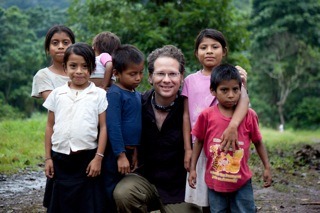
Sean Dimond is a talented and compassionate man who has lived through past life-threatening circumstances to tell a story of beauty and compassion about a world where human dignity is more powerful than war and extreme poverty.
As the acting Director of Communications for Agros International, Sean has applied his diverse background in communications, philosophy, and media-arts to connect the people of the developed world with those suffering in the developing world.
Throughout Central America, rural people have suffered from decades of armed conflict and extreme poverty. Many of these families have been forgotten and left for dead. In most of the developing world, and in Central America specifically, the rural poor depend on land for basic survival. If rural families are able to access their own farmable land, this can create a foundation for food, a secure home, and a path of progress. This is where Seattle-based Agros International comes into the picture.
Agros’ development approach takes into account that while single interventions (such as microcredit or vaccines) are important, in order to sustainably alleviate poverty it is critical to take a holistic approach, or as Agros calls it, “360˚ Development.”
Agros is focused on the long-term alleviation of poverty for entire rural communities by extending long-term loans to purchase farmland, and then partnering with families in applying sustainable agricultural and community development practices. The goal is to empower families to create, develop, and own a thriving, sustainable village.
In summary, Agros does not reduce the causes or solutions of poverty to just the individual, but instead works to alleviate poverty horizontally across an entire community, and vertically so this impact affects future generations.
Rather than build programs based on merely “fixing problems”, Agros seeks to invest in the dreams and values of poor, believing that they have the essential dignity and capacity to work their own way out of poverty.
“Rural poverty is not a statistic. It is a face, a family, a community. And if you first listen and then seek to enable the dreams of the poor themselves, you will be amazed by what they can accomplish,” Sean says.
Sean seems to be destined for international communications. His grandfather was Cherokee Indian and through his legacy Sean developed a passion for rural indigenous people. Having lived in 8 states and 22 cities, and with many opportunities to travel internationally, Sean has a keen sense of inter-connectedness in the world. What’s more, he was influenced by the arts and good communicators and developed a skill for communicating through media. The specific platform for his media skills would end up being decided by fate.
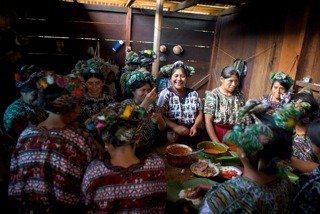
Previous to his work at Agros, Sean owned a creative media firm called “untamed.be” that provided media and marketing communication services to Fortune 500 companies and international NGOs. His success took a turn for the worse when he was later diagnosed with cancer and was forced to close his business. As he struggled through cancer treatment, he continued to pursue one of his passions—music composition. Agros heard about him and hired him to write a score of music for their first promotional video. Sean said that even though this request came during a hard time, he could not say no, “Agros was simply one of a kind.”
After his cancer treatment Sean decided not to go back to his firm, but instead decided to look for work with an international NGO. It was truly serendipitous that at the same time Agros began to look for a Communications Director.
Since the start of his full-time employment with Agros four years ago, Sean has worked to create new fundraising platforms, increase partner engagement, and expand Agros’ visibility through multiple channels. Serving on Agros’ Executive Leadership Team, Sean believes good communications must be driven by an organizations’ strategic plan. With this in mind, he has been able to build a strong communication system for Agros that would tell stories words alone could not accomplish.
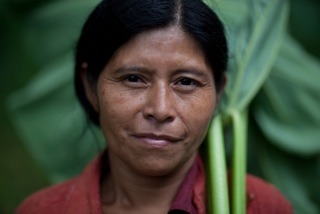
Sean recalls one of his first experiences abroad with Agros: in the mountains of Matagalpa, Nicaragua, in the village of El Eden. It was there during a video interview that he asked a villager to describe Agros in just one word. This villager said, “I would describe Agros as a mirror. Agros has helped us to see our face; they have helped us see that we have dignity. They have helped us to see that we matter.” Sean says it is encounters like this that get him out of bed every morning, focused to help these people help themselves.
Sean believes that “we live in a unique time in human history—the struggles we face globally have a great deal to do with questions of sustainability, whether it is about food or the environment or basic security–and in an increasingly inter-connected world I feel the work of Agros is especially important.”
Sean asserts that the unique, sustainable solutions such as those practiced by Agros are critical for this global challenge. In addition, he does not think of other organizations in the global development sector as competitors. Agros is one important contributor within the global development field, but so are other organizations in their own way. Sean sees his primary competitor as “ ‘the apathy and resignation’ that exists in the general culture; the sense that nothing will ever change”. Sean believes that lasting change to complex problems is possible, “because here at Agros I get the privilege of seeing it happen every day.”
http://www.agros.org/Submitted by Luke Mohr
top
Global Entertainment: Blessed Unrest: How the Largest Social Movement in History is Restoring Grace, Justice, and Beauty to the World by Paul Hawken
Some books are like English gardens, with clear, linear lines that follow formal rules, allowing the reader to see exactly where they are going at all times. Other books take the reader on a journey though an untamed forest where he or she wanders about, delighting in the joy of discovery. Paul Hawken’s book Blessed Unrest is of the latter variety. If the reader can put aside her desire for formal writing and ease into a meandering but fertile narrative, then Blessed Unrest will deliver a sense of hope and inspiration.
The book weaves together environmental and social justice history, poetry, and Hawken’s personal observations in an ambitious attempt to frame what he sees to be a singular global social movement. After years of environmental and social justice activism that brought him into contact with NGOs and social groups around the world, Hawken has come to believe that, though we may not recognize it yet, the multitude of nonprofit and non-governmental groups, educated consumers, green businesses, and concerned citizens around the world are acting in concert to save the planet and ourselves. He writes: “This is the largest social movement in all of human history. No one knows its scope, and how it functions is more mysterious than what meets the eye. What does meet the eye is compelling: coherent, organic, self-organizing congregations involving tens of millions of people dedicated to change.”
Blessed Unrest locates the roots of this global movement in the work of Emerson, Thoreau, Gandhi, Leopold, Martin Luther King, Jr., and Rachel Carson, but also ascribes to the movement such contemporary events as the WTO protests, public responses to the Bhopal disaster and Hurricane Katrina, the Slow Food movement, and the resistance of indigenous peoples around the world to globalization.
While the skeptic may not be convinced by Hawken’s effort weave together the disparate activities of individuals and organizations around the globe, it is nonetheless an ambitious attempt to frame and unify a movement. Indeed, all social movements begin as a collection of independent ideas and actions that, at some point, come together as a recognizable and coordinated movement. The process of unifying often begins with someone framing and naming the movement as Hawken attempts to do here.
In the last two chapters of the book, Hawken leaves us with two powerful analogies for how to better grasp the work and unity of this vast social movement. In one of the analogies, he compares the movement to the human immune system: “ The ultimate purpose of a global immune system is to identify what is not life affirming, and to contain, neutralize, and eliminate it. Where communities, cultures, and ecosystems have been damaged, it seeks to prevent additional harm and then heal and restore the damage.” To deal with the pathogens of environmental degradation and social injustice, “the movement has had to become an array of different types of organizations. There are community development agencies, village- and citizen- based groups, corporations, research institutes, associations, networks, faith-based groups, trusts, and foundations.” Then, in the second analogy, Hawken builds a comparison between the movement and a living organism, which he bases on the work of molecular biologist Mahlon Hoagland. He argues that the two hold in common the following: 1. Life builds from the bottom up: complex organisms are built of cooperating communities of cells, and “the movement to address environmental and social issues has been built up by small, cooperating groups of people; 2. Life assembles itself into chains: so, to, do nonprofits link interests, people, communities, and capital. These interesting and useful comparisons are well worth reading and adding to your global development communications tool kit.
And, as an added bonus, the appendix of Blessed Unrest provides us with a wonderful resource: an exhaustive dictionary and key word list for issues, concepts, and activities that fall under the umbrella of the global movement described by the book. This appendix was made possible by a long-term project at the Natural Capital Institute. Together with the NCI, Hawken has created a global database of civil society organizations that focus on environmental and social justice issues, and a website that aims to “accelerate pubic awareness and increase the ability of the movement to connect and collaborate.” The reader of the Global Washington news letter will no doubt find the resources of such a kindred organization quite useful.
Ketty Loeb, Founder of Wokai Seattle
Announcements
- The 17th Annual RESULTS/RESULTS Educational Fund* benefit will be held on April 27, 2010 at the Seattle Design Center: In its 30th year of advocacy, the non-partisan, citizen-driven work of RESULTS is leading the way in engaging Congress to fund proven, effective, long-term solutions to hunger and poverty in the U.S. and throughout the world. RESULTS volunteers advocate for the most effective, successful programs for ending hunger and poverty—programs for basic health, basic education and microcredit. Click here for more information.
- Unitus Names Eliza Linford Kelly Vice President of Global Communications: As part of the organiza
 tion’s ongoing efforts to alleviate global poverty through microfinance, Unitus is proud to announce that Eliza Linford Kelly has been named Vice President, Global Communications.This promotion will see her assume responsibility for crafting Unitus’s global marketing strategy, as wellas providing insightful thought leadership on issues pertinent to the growth of inclusive financial services for the world’s working poor. Kelly will manage a professional communications team spread
across the organization’s offices in Seattle, Bangalore, and Nairobi to see that the organization’s goals are realized.
“We’re thrilled with all Eliza has accomplished since joining Unitus and are very excited to see what she can do in her new role,” said Unitus President Ed Bland. “We find ourselves at a crucial moment in the fight against global poverty, and ensuring that the goal is never far from public view is essential.”
tion’s ongoing efforts to alleviate global poverty through microfinance, Unitus is proud to announce that Eliza Linford Kelly has been named Vice President, Global Communications.This promotion will see her assume responsibility for crafting Unitus’s global marketing strategy, as wellas providing insightful thought leadership on issues pertinent to the growth of inclusive financial services for the world’s working poor. Kelly will manage a professional communications team spread
across the organization’s offices in Seattle, Bangalore, and Nairobi to see that the organization’s goals are realized.
“We’re thrilled with all Eliza has accomplished since joining Unitus and are very excited to see what she can do in her new role,” said Unitus President Ed Bland. “We find ourselves at a crucial moment in the fight against global poverty, and ensuring that the goal is never far from public view is essential.” - Join leadership gurus Pat Vivian and Wendy Wantanabe for a 5-part capacity building series for Executive Directors: Not an Executive Director? No problem. The content of these sessions will be applicable to anyone in a leadership role, managing a team, or running a department. For more information on the Executive Director series, please click here.
Upcoming Events
Click here to see a full list of international development events on the Global Washington’s calendar. Upcoming events include:
- March 19: Service in Action Seminar Series: Winning the Grant Game
- March 19: FEATURED EVENT: Pacific Northwest Global Donors Conference
- March 20: FEATURED EVENT: Pacific Northwest Global Donors Conference
- March 25: GW EVENT: Leadership Skills for New Executive Directors
- March 25: FEATURED EVENT: SBRI’s Passport to Global Health Celebration
- April 1: GW EVENT: Disaster Response: Is Your Organization’s Communications Team Prepared?
- April 6: GE EVENT: Building Relationships that Lead to Major Gifts
- April 8: GW EVENT: Communications for Busy Nonprofits
- April 15: GW EVENT: Leadership Skills for New Executive Directors
Please submit your events to our calendar!
contacted 763
businesses, academic centers, nonprofits
and foundations in March and April 2009,
inviting them to complete a survey of their
global development activities.
Of an estimated 763 organizations, a
sampling of 122 met our definition of
global development work based on their
survey responses, including their reported
activities in the developing world and the
kind of issues they reported addressing.
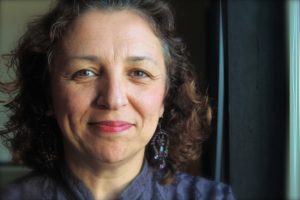 Greetings-
Greetings-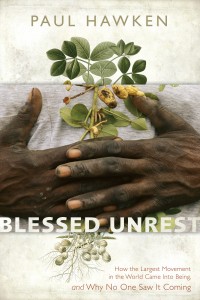 Blessed Unrest: How the Largest Social Movement in History is Restoring Grace, Justice, and Beauty to the World by Paul Hawken (2007)
Blessed Unrest: How the Largest Social Movement in History is Restoring Grace, Justice, and Beauty to the World by Paul Hawken (2007)